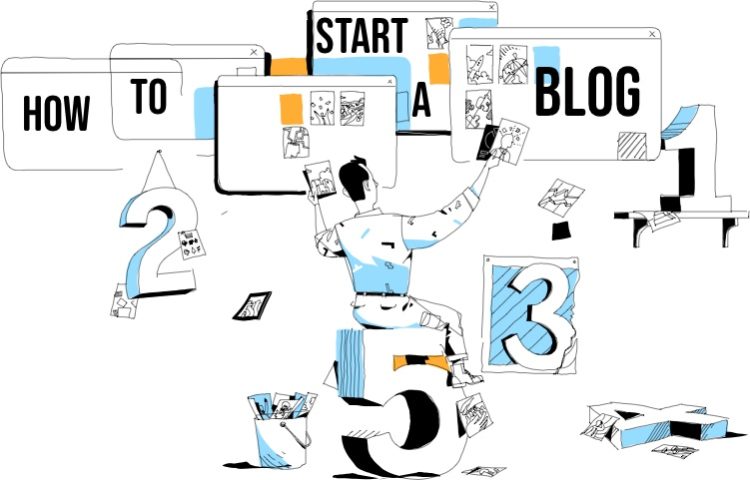Let’s talk blogs; they’re everywhere! Practically everyone has a blog today. There are many reasons for creating a blog. You can earn some money, share your thoughts and opinions, improve your SEO ranking, and prove that you’re an expert on your chosen topic.
Blogging is great and super popular; there is something for everyone out there. Even the most niche topic will have a few blogs to enjoy. This popularity can be a blessing and a curse.
One problem with blogging is that anyone can start a blog, even without any web development knowledge. There are so many tools that let every Tom, Dick, and Harry start one.
But how do you create a blog that stands out from the crowd? Well, it’s easy to do, once you can follow a few steps and take note of a few tips. Read on here to find out how you can set up and create your blog website all in one location.
Steps For Creating A Blog
- Select blog topic
- Pick a domain name
- Select hosting provider
- Set up hosting
- Install blogging software – WordPress
- Customize your blog design
1. Blog Topic
First, decide on what your blog’s topic will be on. Typically bloggers choose one or two subjects they are familiar with so that their blog can be somewhat of a reflection of what they know and have knowledge in. For example, if you have a woman’s boutique online store, you would want to blog about the newest and upcoming season trends. If you own a plumbing business, you would want to write about “how to fix a clogged toilet,” or similar how to’s blog posts.
How to find a blog topic or blog post idea
One easy way to find ideas on almost any topic is to use Google Trends. This tool provides data about the popularity of top search queries in Google Searches across various regions and languages.
How to search for popular trends
- Go to trends.google.com
- Select a country or region from the top right corner
- Search for a term by entering it in the topic search field

Search terms will be shown matching one or more topics in your query, in the language and location given.
2. Domain Name
When choosing a domain, you might want to stick to a short domain and relevant to your blog or website. By choosing industry-relevant keywords, it makes it easy for your audience to remember you and continue coming back to your site.
Check domain name availability by going to GoDaddy Domain Name Search and enter your desired domain name in the text field like shown in the following image.
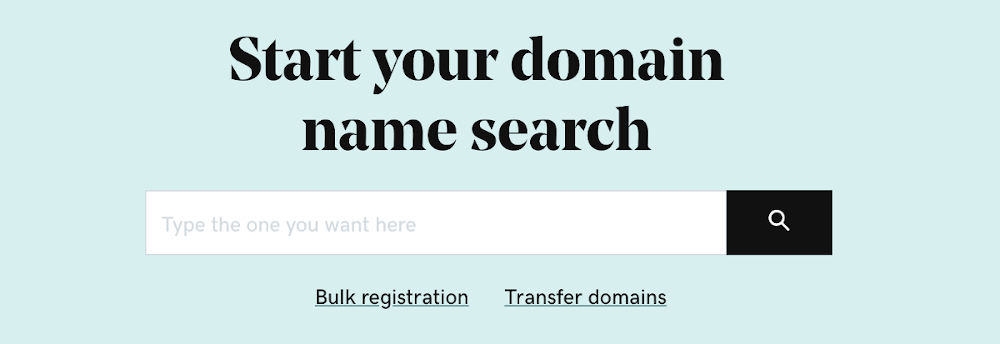
3. Hosting
To make your website accessible via the World Wide Web, you will need a hosting provider. Hosting services are available in a wide range of prices and features. In order to choose the appropriate hosting provider, you first need to decide or at least narrow down your blog or website software platform.
What software to use for Blogging?
There are several different web blogging platforms out there like WordPress, Medium, Blogger, Jekyll, Squarespace, and Wix, to name a few. In this article, we’ll create a blogging website using the most popular framework – WordPress.
Related: WordPress Vs Static Website
WordPress, also referred to as WP is a free, open-source blogging and website developing platform that is easy to set up, maintain, and update without any coding skills. WordPress now powers more than 32% of all sites around the world. With the blogging platform all figured out, lets dive right into the hosting part.
What to consider when choosing a hosting provider?
In our own experience, you can’t give the title of “the best WordPress hosting company” to anyone. But there are three fundamental features to consider when choosing a hosting provider – speed, security, and support.
There are several blogs, websites, and online forums dedicated to recommend and test different hosting providers, many of them sponsored by these hosting companies. So you will find lots of mixed opinions about the best hosting providers.
Based on our experience by working with our clients, we see that StableHost, Godaddy, Inmotion Hosting, Hostgator, and SiteGround are good options for hosting your WordPress website.
Now that you have all figured out, its time to start creating your blog.
4. Set Up Hosting For Your Blog or Website.
For this tutorial, we will be using StableHost.com. We have used them in the past with excellent results. Stablehost is cost-effective, provides good support, performance is great, and you get to pay each month at the time instead of the popular 36-month agreement like almost any other hosting company out there enforces.
If you are choosing a different hosting provider, the user interface and steps should be very similar, so don’t worry.
- Go to https://www.stablehost.com
- Choose the starter plan for your blog/website hosting by clicking on the Sign Up Now button.

- Next, enter your desired domain to check availability. If the domain you entered is not available, you will get some ideas and recommendations with different name and extension options.
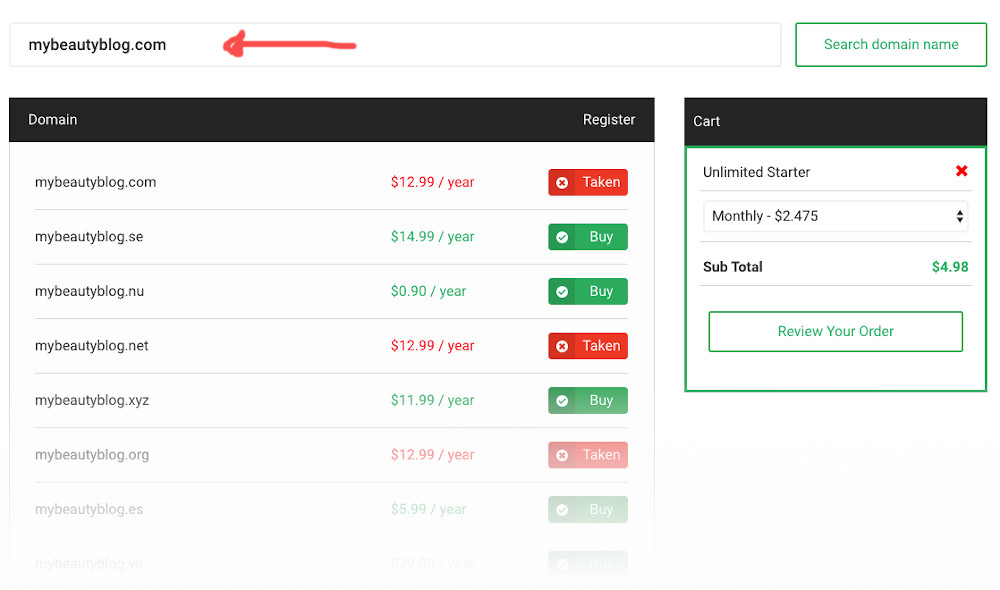
Since we already own a domain, we select the “I want to use an already existing domain option”, enter our domain name and click Next.
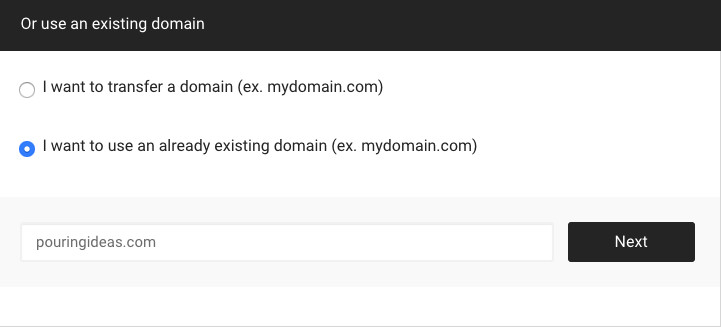
- Review your order, remove any addons, choose the closest location of your target market, select payment method, and click “Continue To Checkout”.
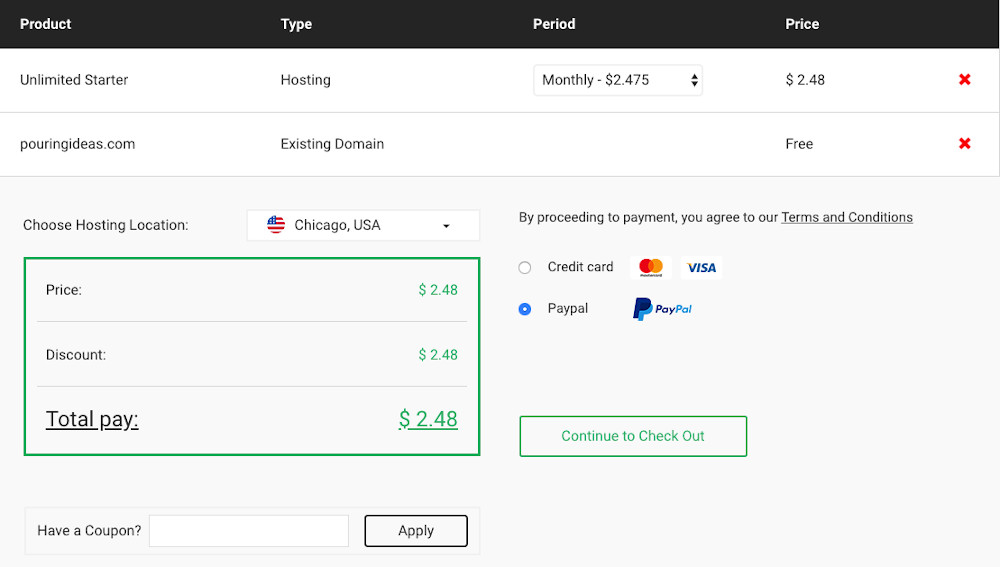
- Next, create an account by entering email, password and all your contact information. Follow the instructions and complete payment.
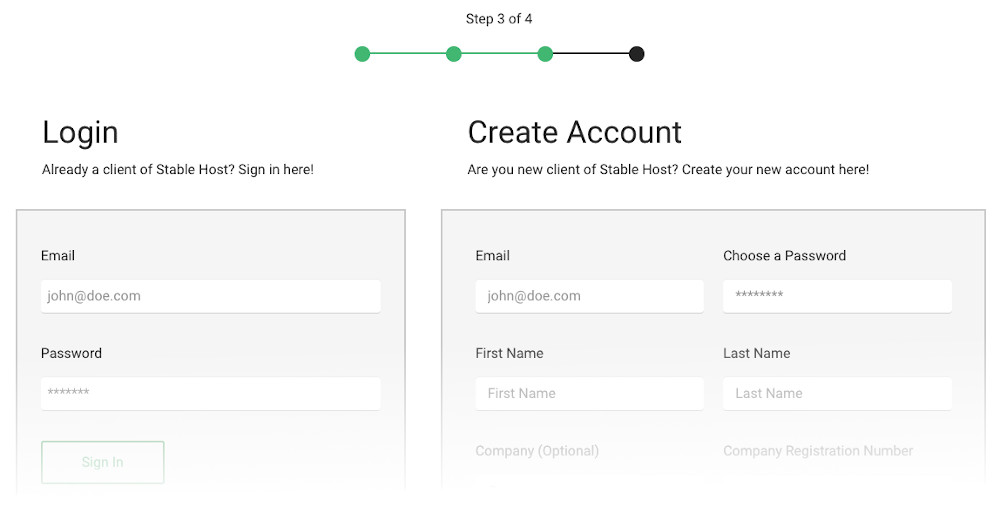
- After payment is completed, you will receive an email with a receipt and login instructions. Please read all the emails to learn more about your hosting account. You are now ready to login into your newly created hosting account. Just go to https://www.stablehost.com/login and select Customer Portal from the tab and enter your login information.

Keep in mind that it may take a few minutes and sometimes a couple of hours for your hosting account to be ready for use.
You have now created your hosting account. The next step is to install our blogging software – WordPress.
5. Install Blogging Software – WordPress
WordPress is a robust, open-source publishing platform, and content management system that you can use to create a website, blog, or online store. WordPress is free to use, and there are no licensing fees or subscriptions.
In this section, we will be installing WordPress on our hosting account using Cpanel.
Cpanel is a web hosting control panel that provides a graphical interface (GUI) and tools designed to simplify the process of hosting a website to the website owner.
How to Install WordPress in Cpanel
- Login to your hosting account and click your web hosting plan to access the details.
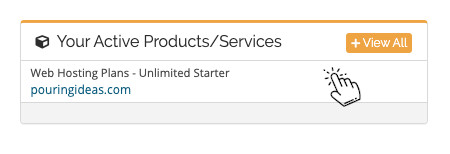
- Click Login to cPanel.
- Scroll down to the Apps Installer section, click the WordPress icon, and press “Install Now“.
- Select the domain name and the latest WordPress version to install.
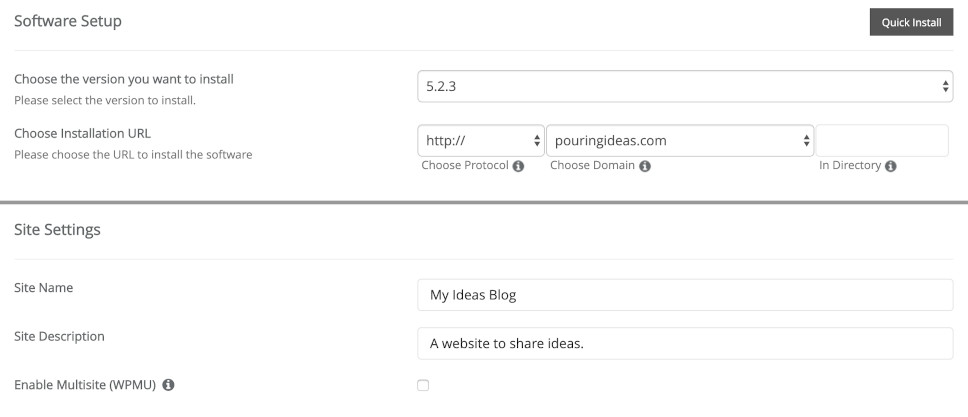
- Enter Site Name and Site Description, as shown above.
- Under Admin Account, enter Admin Username, Admin Password, and Admin Email. Make sure to use a unique, hard to guess username and password.
- If available, check “Limit Login Attempts” and “Classic Editor”.
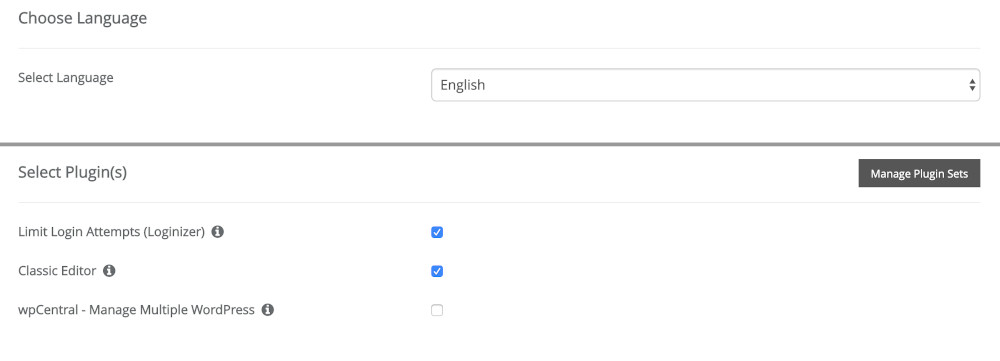
- Under Advanced Options, you have the option to enable automatic upgrades and updates. It is essential to keep your WordPress core files and plugins updated for security, performance, and stability of your website. We recommend to automatically upgrade WordPress to minor versions only, which ensures the latest security and bug fixes. Themes and plugins can also be updated automatically to comply with all newer versions of WordPress.

- Click “Install”.
Congratulations, you have successfully installed WordPress on your hosting account.
Your new website with a blogging platform is out into the world wide web, ready to be discovered.
Related: How to Install Zip Extension in Cpanel
6. Customize your blog design
Now that you have your website ready, it’s time to focus on the website design.
During the installation, WordPress activated a default theme for your website. WordPress themes are templates that define the layout and appearance of a website. They include all assets, stylesheets, and javascript files needed to render your site on a browser.
Themes can be customized, edited, managed, and styled to give your blog a more custom look.
How to manage your WordPress website/blog
- Access your website admin area by adding /wp-admin to the end of your domain name, for example, www.pouringideas.com/wp-admin
- Enter the username and password you selected when installing WordPress.
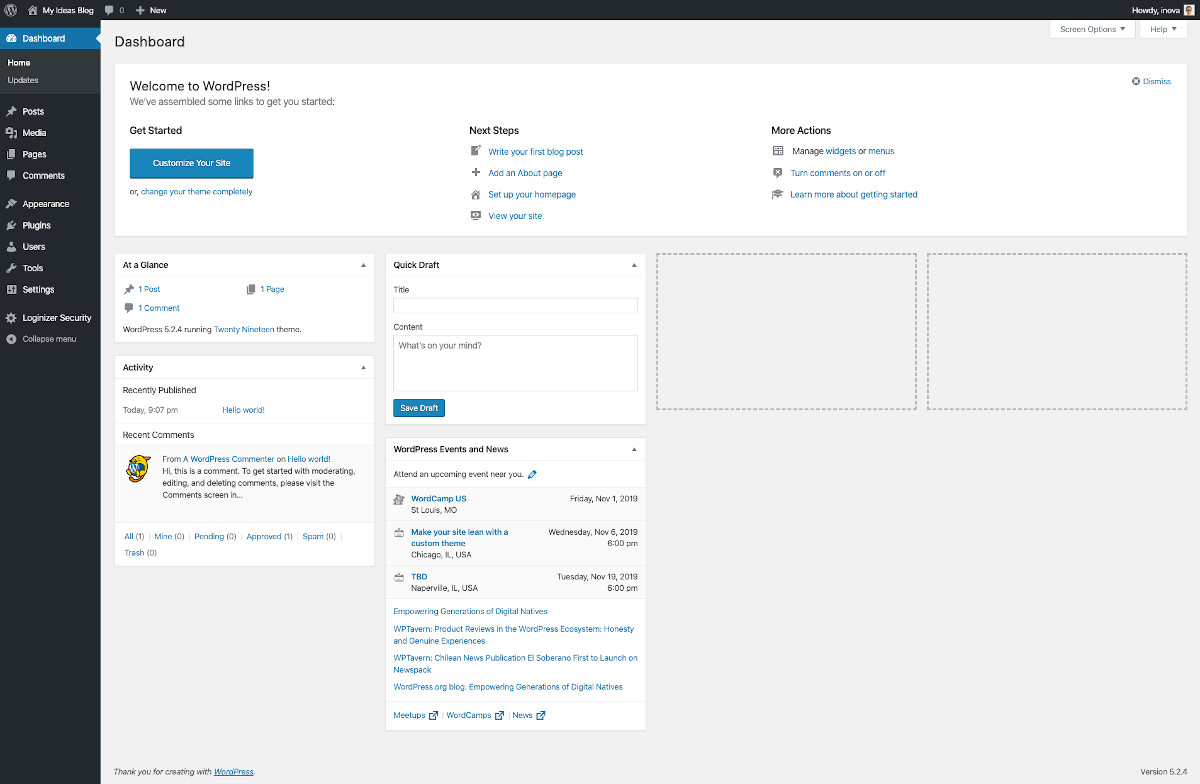
After logging in, you will be redirected to the main administration area, also known as the WordPress dashboard. This is where the management of your site begins.
Related: Web Design Process
From the left sidebar, you have access to the website pages, posts, blog post comments, settings, and all the main features of your website. Please visit the official WordPress website to learn more about how to use the administration area and get more familiar with the WordPress platform.
We recommend reading the Beginners Guide: 15 Things to Do After Installing WordPress to configure your website properly.
Tips for the design of your website/blog
- Maintain consistency, define 2-3 colors and use them across all your webpages. Please refer to our Web Design Color Trends blog post for color ideas.
- Choose the right fonts – Arial, Roboto, Helvetica, and Sans are good options. Visit Google Fonts for inspiration.
- Use graphics and visual cues like icons, elements, and backgrounds that distinguish your blog from your other content. Use the appropriate images to convey the message you plan to show your audience through your blog. We wrote an excellent article on how to optimize images for better search engine performance, make sure to check it out.
- Keep your main navigation menu simple with 5-7 items. Use the footer section for less important links.
- Your contact information should be easily accessible in the header and footer section.
- When it comes to blogging, think about content creation. Use topics that help dominate your niche and not something from the content mill.
- The content should have proper grammar, spelling, and easy to read, preferably with short paragraphs or bullet points. They are easier to consume.
Setting up a blog will go a long way in helping you generate traffic to your site and in building your brand.
In conclusion:
Blogging is a great way to reach an audience. Everyone can start a blog, whether it’s for your personal use or a business. Although creating content can be exhausting, the benefits of having a blog outweigh any of the disadvantages. Create a unique blog and a proper blog website, and you’re off to a great start. Happy Blogging!

Author
Claire Newton
Currently working as a Marketing Executive at Design Wizard, Claire is passionate about creating amazing content and bringing people together. Having recently graduated with her masters degree in Marketing she is keen to impact the digital world. Outside of work you can catch Claire taking photos of her rescue dog Storm and checking out social media.
